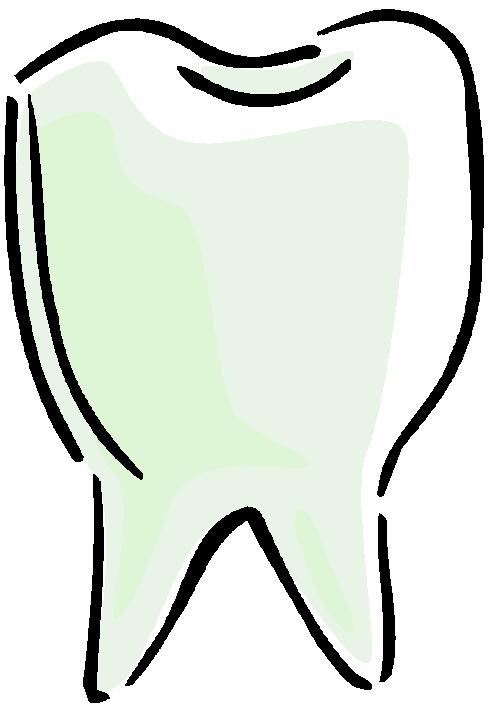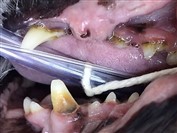

DENTAL DISEASE
Some of the signs of dental disease are as follows:
Bad breath
Sore mouth
Difficulty eating
Loose teeth or tooth loss
Pawing or rubbing the mouth
Bleeding gums
Dribbling saliva
Yellow or brown tartar on the teeth
About 70% of cats and 80% of dogs have some sign of dental disease. The toxins released from the bacteria in the mouth can result in kidney, heart and liver disease. Pets can lose weight due to dental disease. If your pet is showing any of the above signs, a dental performed under general anaesthetic may be needed. During this procedure our vets will remove the tartar using an ultrasonic scaler and then the teeth will be polished to leave a smooth surface which will slow down the future build up of plaque. Regular tooth brushing at least three times a week with a pet toothpaste will help prevent dental disease. There are also oral rinses, antibacterial gels, dental chews and dental diets available at Southern Cross Veterinary Clinic.
DENTAL PROCEDURE
Why is a dental necessary?
Dental work is advised for a number of reasons. There may be a specific lesion in the mouth which is causing pain and predisposing to infection, or there may be a general accumulation of tartar which may result in periodontal disease (infection around the teeth). Dental disease has been shown to allow bacteria into the system and potentially to cause infections elsewhere in the body. By the time your pet is 3 years old, he or she will very likely have some early evidence of periodontal disease, which will worsen as your pet grows older. Oral pain often goes unnoticed in pets and some will continue to eat, even when they are in considerable discomfort. It is common for owners not to notice a problem before a dental but afterwards to see a significant improvement in the appetite and demeanour of their pet.
Because most dental disease occurs below the gum line, where you canít see it, thorough dental cleaning and evaluation is performed under a general anaesthetic. This means it is important that the patient be starved overnight before the procedure. Our estimate for the procedure covers a wide range as we often canít tell if any teeth need to be extracted until they are probed under anaesthetic during the procedure.
What happens during a dental procedure?
Your pet will have a pre-medication which is usually a combination of antibiotic and pain relief. The anaesthetic drugs and sometimes fluids (if your pet is over 7 years old) are given into a vein on a front leg so your pet will have a small clipped-up area there. A tube is placed down the windpipe and tied into position. The back of the throat is carefully packed to prevent fluid going down the windpipe and into the lungs.
Initially, any large lumps of tartar are removed. Then the teeth are ultrasonically scaled above and below the gum line. The teeth are subsequently probed and investigated to find any specific problem areas. Any teeth with problems which will not resolve after treatment will be extracted. Problems which necessitate extraction include: chips or fractures which go into the pulp cavity; 'neck lesions' in cats (feline odontoclastic resorptive lesions); abscesses; cavities; retained baby teeth; and severe periodontal disease. When teeth have been extracted the sockets may be large and require stitching. The sutures are dissolvable and do not need to be removed. Finally the teeth are polished.
What to do after your pet has had a dental?
Some pets will need pain relief or antibiotics to go home with;
A light meal should be given to your pet the evening after the anaesthetic (ie chicken, white fish or scrambled eggs), as their normal diet can be too heavy and can cause them to vomit;
Cats will need to be kept inside at home for the first night;
If your pet acquires a cough after the anaesthetic, please see one of our vets if it persists for more than 3 days;
Following the dental, good oral care at home is very important to prevent dental disease in the future. Regular tooth brushing (ideally daily) is best but there are other oral hygiene products in stock such as dental diets, oral gels and rinses, and liquids to add to the drinking water.
back to Pet Info
back to Home
Some of the signs of dental disease are as follows:
Bad breath
Sore mouth
Difficulty eating
Loose teeth or tooth loss
Pawing or rubbing the mouth
Bleeding gums
Dribbling saliva
Yellow or brown tartar on the teeth
About 70% of cats and 80% of dogs have some sign of dental disease. The toxins released from the bacteria in the mouth can result in kidney, heart and liver disease. Pets can lose weight due to dental disease. If your pet is showing any of the above signs, a dental performed under general anaesthetic may be needed. During this procedure our vets will remove the tartar using an ultrasonic scaler and then the teeth will be polished to leave a smooth surface which will slow down the future build up of plaque. Regular tooth brushing at least three times a week with a pet toothpaste will help prevent dental disease. There are also oral rinses, antibacterial gels, dental chews and dental diets available at Southern Cross Veterinary Clinic.
DENTAL PROCEDURE
Why is a dental necessary?
Dental work is advised for a number of reasons. There may be a specific lesion in the mouth which is causing pain and predisposing to infection, or there may be a general accumulation of tartar which may result in periodontal disease (infection around the teeth). Dental disease has been shown to allow bacteria into the system and potentially to cause infections elsewhere in the body. By the time your pet is 3 years old, he or she will very likely have some early evidence of periodontal disease, which will worsen as your pet grows older. Oral pain often goes unnoticed in pets and some will continue to eat, even when they are in considerable discomfort. It is common for owners not to notice a problem before a dental but afterwards to see a significant improvement in the appetite and demeanour of their pet.
Because most dental disease occurs below the gum line, where you canít see it, thorough dental cleaning and evaluation is performed under a general anaesthetic. This means it is important that the patient be starved overnight before the procedure. Our estimate for the procedure covers a wide range as we often canít tell if any teeth need to be extracted until they are probed under anaesthetic during the procedure.
What happens during a dental procedure?
Your pet will have a pre-medication which is usually a combination of antibiotic and pain relief. The anaesthetic drugs and sometimes fluids (if your pet is over 7 years old) are given into a vein on a front leg so your pet will have a small clipped-up area there. A tube is placed down the windpipe and tied into position. The back of the throat is carefully packed to prevent fluid going down the windpipe and into the lungs.
Initially, any large lumps of tartar are removed. Then the teeth are ultrasonically scaled above and below the gum line. The teeth are subsequently probed and investigated to find any specific problem areas. Any teeth with problems which will not resolve after treatment will be extracted. Problems which necessitate extraction include: chips or fractures which go into the pulp cavity; 'neck lesions' in cats (feline odontoclastic resorptive lesions); abscesses; cavities; retained baby teeth; and severe periodontal disease. When teeth have been extracted the sockets may be large and require stitching. The sutures are dissolvable and do not need to be removed. Finally the teeth are polished.
What to do after your pet has had a dental?
Some pets will need pain relief or antibiotics to go home with;
A light meal should be given to your pet the evening after the anaesthetic (ie chicken, white fish or scrambled eggs), as their normal diet can be too heavy and can cause them to vomit;
Cats will need to be kept inside at home for the first night;
If your pet acquires a cough after the anaesthetic, please see one of our vets if it persists for more than 3 days;
Following the dental, good oral care at home is very important to prevent dental disease in the future. Regular tooth brushing (ideally daily) is best but there are other oral hygiene products in stock such as dental diets, oral gels and rinses, and liquids to add to the drinking water.
back to Pet Info
back to Home

